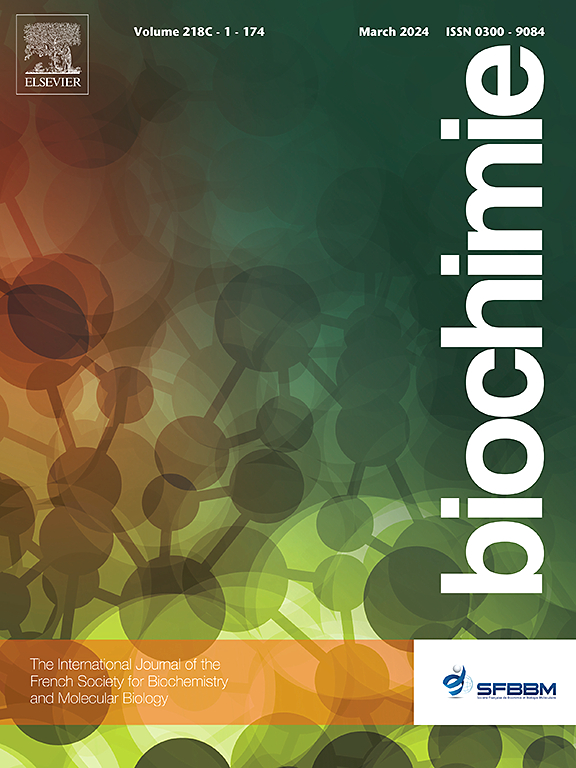通过物理化学指导方法提高库尼茨型抑制剂(ApTI)中线性加密肽的抗菌潜力。
IF 3.3
3区 生物学
Q2 BIOCHEMISTRY & MOLECULAR BIOLOGY
引用次数: 0
摘要
近年来,细菌耐药性已成为一个严重的公共卫生问题,因此人们开始寻找新的抗菌剂。在此,我们报告了一种名为 PEPAD 的抗菌肽(AMP),它是根据 Kunitz 型植物肽酶抑制剂的加密肽设计的。PEPAD 能够在微摩尔浓度(从 4 μM 到 10 μM)下快速抑制和消除多种细菌,并具有直接的膜活性。研究还发现,该肽能与环丙沙星协同作用,并且在 G. mellonella 体内试验中没有显示出毒性。环二色性测定显示,多肽的二级结构会根据插入环境的不同而采用不同的支架。在模拟细菌细胞膜的脂质中,PEPAD 采用了更稳定的 α 螺旋结构,这与其膜相关的作用机制是一致的。当与模拟哺乳动物细胞的脂质接触时,PEPAD 采用无序结构,失去其功能,表明其具有细胞选择性。因此,这些发现使 PEPAD 有希望成为未来对宿主毒性低的抗菌疗法的候选物质。本文章由计算机程序翻译,如有差异,请以英文原文为准。
Boosting the antibacterial potential of a linear encrypted peptide in a Kunitz-type inhibitor (ApTI) through physicochemical-guided approaches
Bacterial resistance has become a serious public health problem in recent years, thus encouraging the search for new antimicrobial agents. Here, we report an antimicrobial peptide (AMP), called PEPAD, which was designed based on an encrypted peptide from a Kunitz-type plant peptidase inhibitor. PEPAD was capable of rapidly inhibiting and eliminating numerous bacterial species at micromolar concentrations (from 4μM to 10 μM), with direct membrane activity. It was also observed that the peptide can act synergistically with ciprofloxacin and showed no toxicity in the G. mellonella in vivo assay. Circular dichroism assays revealed that the peptide's secondary structure adopts different scaffolds depending on the environment in which it is inserted. In lipids mimicking bacterial cell membranes, PEPAD adopts a more stable α-helical structure, which is consistent with its membrane-associated mechanism of action. When in contact with lipids mimicking mammalian cells, PEPAD adopts a disordered structure, losing its function and suggesting cellular selectivity. Therefore, these findings make PEPAD a promising candidate for future antimicrobial therapies with low toxicity to the host.
求助全文
通过发布文献求助,成功后即可免费获取论文全文。
去求助
来源期刊

Biochimie
生物-生化与分子生物学
CiteScore
7.20
自引率
2.60%
发文量
219
审稿时长
40 days
期刊介绍:
Biochimie publishes original research articles, short communications, review articles, graphical reviews, mini-reviews, and hypotheses in the broad areas of biology, including biochemistry, enzymology, molecular and cell biology, metabolic regulation, genetics, immunology, microbiology, structural biology, genomics, proteomics, and molecular mechanisms of disease. Biochimie publishes exclusively in English.
Articles are subject to peer review, and must satisfy the requirements of originality, high scientific integrity and general interest to a broad range of readers. Submissions that are judged to be of sound scientific and technical quality but do not fully satisfy the requirements for publication in Biochimie may benefit from a transfer service to a more suitable journal within the same subject area.
 求助内容:
求助内容: 应助结果提醒方式:
应助结果提醒方式:


